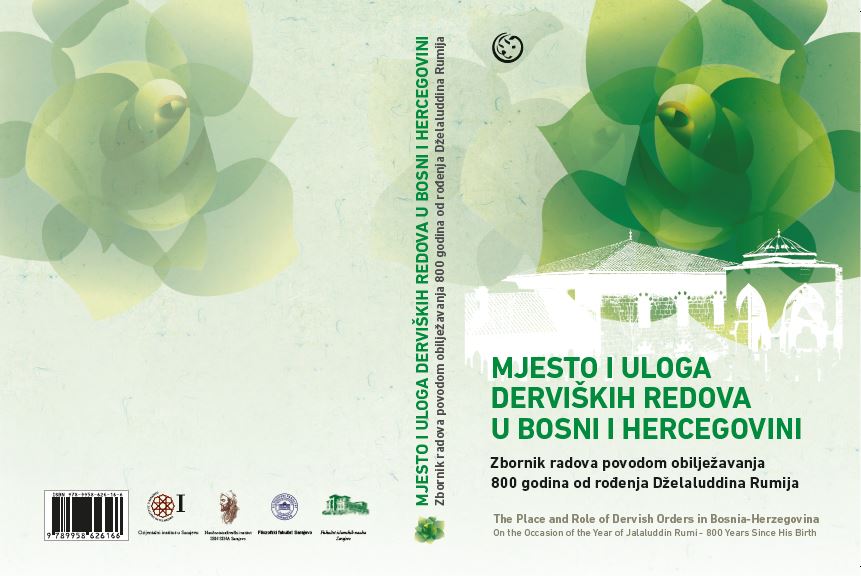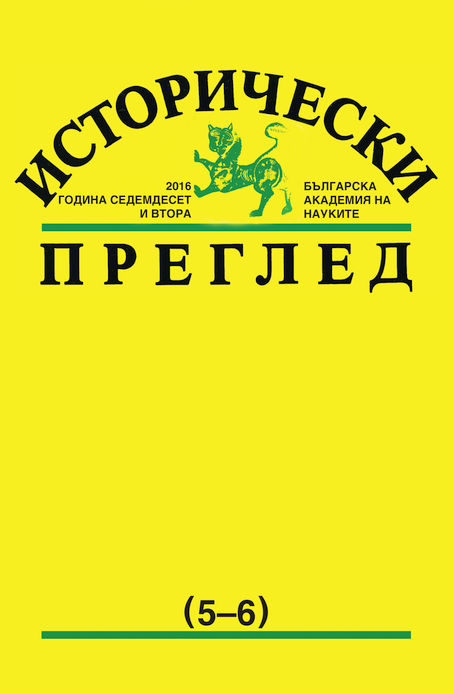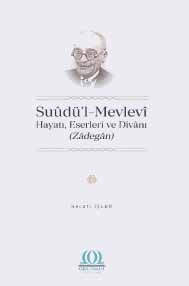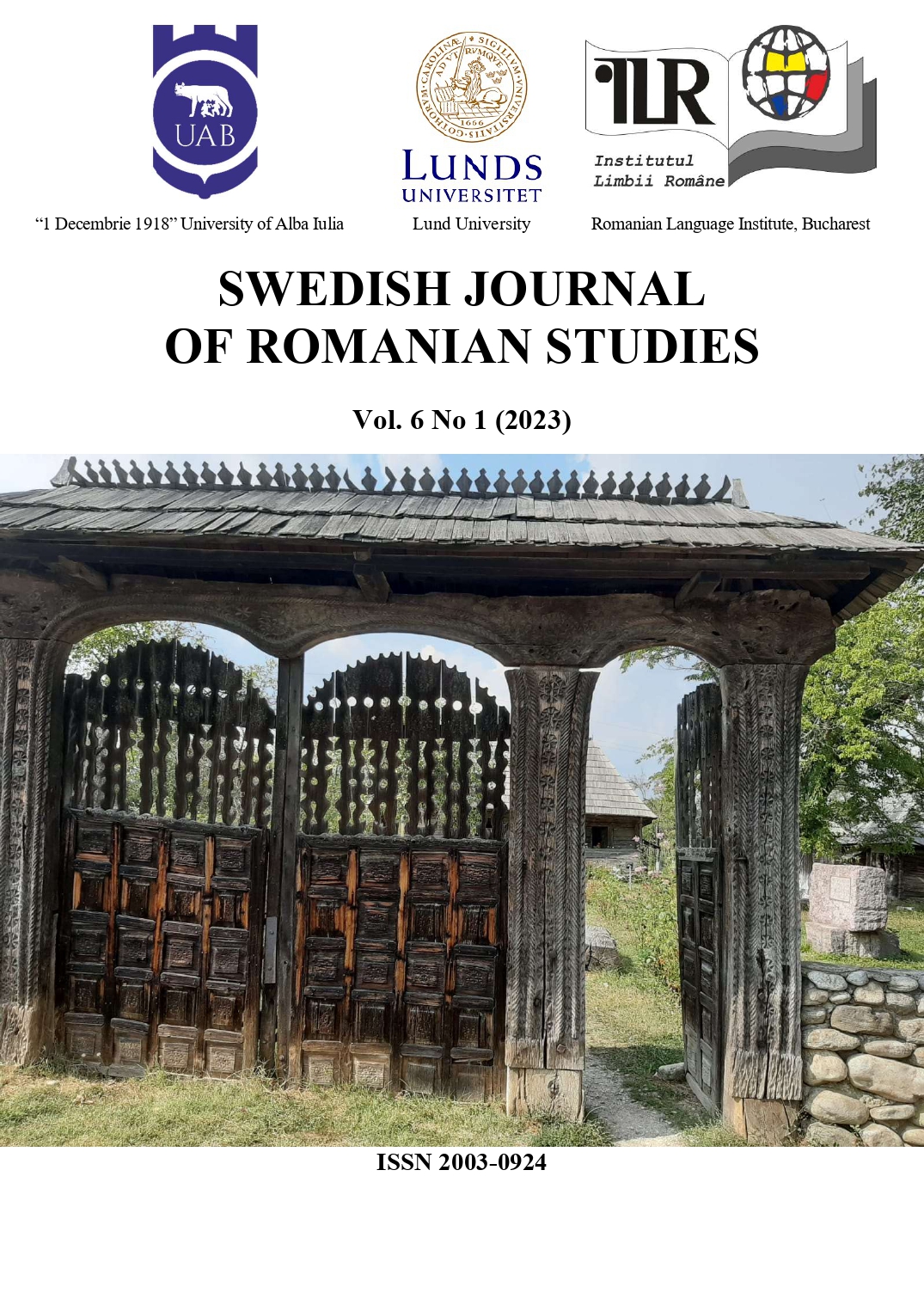
We kindly inform you that, as long as the subject affiliation of our 300.000+ articles is in progress, you might get unsufficient or no results on your third level or second level search. In this case, please broaden your search criteria.



The Kurds are a people who speak a Persianate language or cluster of dialects and who comprise the dominant population in the territories where contemporary Turkey, Syria, Iraq, and Iran meet. The name “Kurdistan” loosely denotes these lands where the Kurds live, although because an expressly Kurdish state has ever existed, the boundaries of Kurdistan have never been defined with any precision. Scholars typically describe the Kurdish language as encompassing two major dialects, Kurmanji and Sorani, but disagreements exist about the proper classification of Kurdish dialects and sub-dialects and about the relationship of other Persianate tongues to Kurdish. Kurds today likely number somewhere around twenty-five million people and are often identified as the world’s largest ethnic group without a state. Thus their modern history is generally narrated as one of victimhood and denial of statehood. This paper represents an attempt to make the seemingly counter-intuitive argument that the collapse of imperial rule in the early twentieth century was, for the purposes of Kurdish national aspirations, premature and therefore ruinous in its consequences.
More...
Kliška tvrđava nalazi se u mjestu Klis, u okolici Splita. Klis su svojedobno naseljavali Iliri, a vremenom će Kliška tvrđava postati jednom od najznačajnijih utvrda hrvatskih krajeva. Ovladavanje Kliškom tvrđavom, zbog njezina iznimnog strateškog značaja, uvijek je predstavljalo izazov za različite osvajače. Izuzetak nisu bile ni snage Osmanske imperije koje su 1537. godine osvojile tvrđavu, a Klis učinile sjedištem Kliškog sandžaka. Grad Klis i Kliška tvrđava ostat će u rukama osmanskih Turaka do 1648. godine, kada u toku Kandijskog rata, grad zaposjedaju Mlečani. Kliški sandžak, jedna od upravnih jedinica Bosanskog ejaleta, osnovan 1537. godine, zauzimao je dosta značajnu površinu. Većim dijelom se nalazio na teritoriji zapadne Bosne, dostižući jednim svojim krakom gotovo centar Bosne. Dalje prema zapadu zauzimao je prostrane teritorije u Dalmaciji, izlazeći na više lokacija i na samu morsku obalu. Naziv je dobio po nepristupačnoj utvrdi Klis, koja se nalazi u zaleđu Splita, na izrazitom uzvišenju iznad bogatog Solinskog polja. Držanje ove tvrđave u svojoj vlasti pokazivalo je stratešku premoć strane u čijim je rukama i omogućavalo joj je kontrolu širokog područja puteva od srednjeg Jadrana ka unutrašnjosti Osmanskog carstva. Stoga je, kao simbol osmanske vojne nadmoćnosti, Klis bio proglašen zvaničnim sjedištem novoosnovanog sandžaka.Knjiga koja je pred vama prevod je i obrada zvaničnog osmanskog deftera – opširnog popisa mustahfiza Kliškog sandžaka iz 1550. godine na osnovu osmanskog izvornika pohranjenog u Arhivu Predsjedništva vlade u Istanbulu, a čija kopija se nalazi u zbirci Orijentalnog instituta u Sarajevu. Osim podataka o mustahfizima i njihovim timarima, defter sadrži i korisne informacije o stanovništvu koje je naseljavalo te timare, a koji su se nalazili u brojnim gradovima, selima i naseljima diljem Kliškog sandžaka. Zahvaljujući tome, on predstavlja i izvor značajnih podataka za proučavanje razvoja pojedinih naselja, kao i funkcioniranja izvršne i sudske vlasti na tim područjima. Nadajući se kako će objavljivanje ovog djela biti od koristi za ovdašnju akademsku zajednicu i omogućiti bolji uvid u neke historijske činjenice iz predmetnog perioda, iskazujemo svoju zahvalnost prije svega autorici, dr. Fazileti Hafizović, ali i Orijentalnom institutu – njezinoj matičnoj kući, kao i rukovodstvu instituta na čelu sa uvaženom dr. Behijom Zlatar koja se saglasila s objavljivanjem ovoga djela u izdanju Naučnoistraživačkog instituta „Ibn Sina“. Temeljni naum i cilj našega Instituta jest doprinositi kulturnom i znanstveno-intelektualnom boljitku društva i zemlje u kojoj djelujemo. Bit će nam drago ako nam ovaj čin bude „upisan“ u djela kojima služimo bh. kulturnoj i akademskoj javnosti pomažući znanstvenim istraživačima, ali i svim znatiželjnicima koji uvidom u kulturnu i političku prošlost i povijest ovih prostora nastoje bolje i sadržajnije razumijeti i obogatiti svoju sadašnjost.
More...
The paper draws attention to the connection of semasiological and onomasiological approach to the interpretation of tasawwuf in classical literature: in the comments (sharhs) of works by famous Sufis, in treatises (Risalah) on individual issues of tasawwuf sciences, as well in literary works which contents one and/or both mentioned approach to the presentation of tasawwuf lexemes in broad and narrow sense.
More...
U ovom referatu govori se o utjecaju Osmanske države na organizacijutekija kod Seldžuka i Osmanlija. Tekije su imale veliku ulogu u formiranju naselja a tarikati u razvitku društvenih odnosa, dok je država nastojala iskoristiti takav utjecaj i staviti ga pod svoju kontrolu i u svoju službu.Odnos centralne uprave prema tekijama i tarikatima podrazumijevao jeu velikoj mjeri i utjecaj države na organizaciju tarikata i utjecaj tarikata naneke dijelove društva i državnog aparata.
More...
The paper under the title ‘’Guild and tarikat’’ considers the relation of the central government, guild organizations and tarikats and their mutual connections and functioning, primarily in provincial parts of the Empire.This work establishes that the main and unique tarikat “Tariqat-iMuhammadiyya” and individual tarikats which were under the influence and the control of the main tarikat took care not only about the preservation of the hierarchy, generally, but also about securing the hierarchy in guilds and guild groups and that they held a considerable influence in their inner organization.
More...
A look at the intellectual environment of the period of Sultan Selim III as exemplified in Şeyh Galib’s seminal work reveals its Islamic context and a specific Ottoman Sufi tradition. Contrary to conventional historiography,the reforms of the late Ottoman period that started with the Nizam-i Cedid can be viewed within the framework of continuity of Ottoman socio-political thought and not only a mere product of the European influences at the time of imperial decline.
More...


The article is dedicated to one aspect of the long-lasting life of the Cyrillic alphabet, namely the use of Cyrillic script as base for the Slavonic book publishing in its initial period from the end of the 15th – the 16th centuries. The main goal is to illustrate some peculiarities in the grapheme inventory, and to point out the cultural-historical functions of the early printed Cyrillic, the major of which was the preservation and the reproduction of the religious and spiritual identity. Supplementary, but not less important functions were the creation of cultural communities, the integration of the Bulgarian written legacy in Europe, its cognitive, moral, entertaining function, and others. The statement is subjected to the pursuit of shaping historically the relation between alphabet and identity, which should be realized as value, especially in the year of the Bulgarian presidency of the European Union, and the Cyrillic as one of its symbols.
More...

The Ottoman Empire was one of the main belligerent Powers in the First World War which ended the long nineteenth century and ushered in the modern era. Indeed, it would not be wrong to say that the Empire was among the major six Powers that fought over four years. The Ottomans fought at no less than twelve fronts in a vast geography extending from European theaters like Galicia to Mesopotamia and the Canal. The war at the Caucasus and the abortive Allied landing on the Gallipoli Peninsula directly affected the causes of the October Revolution in 1917. The Ottoman Empire sued for armistice only ten days before Germany did so. Moreover, the results of the Ottoman engagement deeply affected the shape of the modern Middle East in a singular way.However, the role of the Ottoman Empire in the First World War has only rarely been studied in a scholarly fashion. Years of neglect ended up with the overbearing and simplistic notion that the Ottoman leadership was already pro-German and there was no way for the Entente Powers to stop them from aligning with Germany. As amply demonstrated in this study, this was not the case at all.All those crises that preceded the outbreak of the First World War, beginning from the Annexation Crisis of 1908, to the Libyan and Balkan Wars up to the Liman von Sanders Crisis just months away from August 1914, directly involved the Ottomans. Given the long history of Russo-Turkish wars, there was no way for the Ottomans to lightly discount the imminent danger they found themselves squarely facing in August 1914. Their fear that Tsarist Russia would not miss the opportunity arising in the midst of the great upheaval to settle once and for all the issue of Constantinople and the Straits, the crux of the age old Eastern Question was the dominant factor in their mind.The present study is a diplomatic history of the crises years from 1908 to the entry of the Ottoman Empire to the Great War at the end of October 1914.
More...
Suūdu’l-Mevlevī is a poet and calligrapher who witnessed the last period of the Ottoman Empire and the first years of the Republic of Turkey. In addition to his father’s contribution, Tahirü’l Mevlevī and the cultural environment of Istanbul contributedmuch to his literary capacity. He has also trained himself in calligraphy by taking lessons from the famous calligraphers of his age. Suūdu’l-Mevlevī working as clerk in the Dīvān for twenty years has also taught the calligraphy in madrasahs. He has officiated in Millet Library and Merkez Efendi Mosque. Suūdu’l-Mevlevī has fallowed a group of poetry aggregated under the name of “Encümen-i Şuara”. He has followed in footsteps of Yenişehirli Avnī, the powerful poet of this society. The only work of Suūdu’l-Mevlevī,aggregating all of his poems is Zādegān. He has used the penname of “Suūd” in almost all of his poems. Suūdu’l-Mevlevī has written many qasidah and ghazels. There are 806 poems in Zādegān. 389 of them is ghazels. His love for Mevlānā and Mesnevīis given special room in Zādegān.
More...
The fundamental part of this study consists of the account of my stay in Turkey, from April 1904 to December 1913, but before undertaking it, I believe it essential to expose, with some details, the question of Macedonia which is, in a way, the central point at the same time as the origin, of the events that I will have to relate, to show the development of this question in the XIXth century as well as the situation of the Macedonian region when the Powers, on the initiative of Russia and Austria, decided to send their representatives there. (The author has been Honorary Consul General of Bulgaria, former member of the French section of the International Mission for the Reorganization of the Ottoman Gendarmerie). ORIGINALLY PUBLISHED IN 1928 BY PAYOT, PARIS
More...
The knowledge existent at present, which generates the need for a new approach to the myth of Dracula, refers to an almost unanimous reception based on the novel published in 1897 by Bram Stoker and on the tens of the subsequent portrayals which have induced a social and cultural paradigm standardized as commercial kitsch. Within this fictitious construct Dracula has been expounded in manifold keys. However, to ordinary perception, his figure is reduced to the semi-caricatural vampire character, the living-dead craving for blood. This article aims to answer a series of questions about the representations of Dracula and their relevance to the fields of cultural and literary studies: Which is the “real” Dracula? Which are the psychological, cultural, social and historical impulses determining the actions of the character and the established myth? To what extent the deeds of the personage can be accounted for through the instrumentality of psychological impetus and by the agency of cultural, philosophical, esoteric, and occult principles? Thus can the “real” Dracula be integrated into an ampler context of culture and civilization, where his alienation and his monstrosity belong less to the paradigm of “the other”, of “the stranger” and refer more to the revealing of some of “our” intimately repressed human features?The article proposes a critical examination and reinterpretation of Dracula’s image, starting from the novel Jurnalul lui Dracula (Dracula’s Diary) (1992) by the Romanian writer and academic Marin Mincu. Original responses are being suggested to the questions defined previously – through several writing and literary theory techniques, including references to Corpus Hermeticum.By comparing and contrasting the hermetic philosophical text and the Romanian novel, the essay aims at finding out whether the entire construct of the myth of Dracula can be explained through two cultural and philosophical aspects, namely death and immortality. It also offers a new reading, another conceptualization of a familiar but debatable subject, which reinterprets and even rejects the mainstream view. The work by the extremely well-informed Romanian academic, which was first published in Italy, has nothing in common with Bram Stoker’s (“vampiric falsification”, asserts the author in the preface…), but vividly portrays the “real” Dracula, the Prince Vlad the Impaler, imprisoned in the underground cave of a castle under the Budapest Danube, writing a journal between February, 2nd, 1463 and August, 28th, 1464. In his diary the character recalls his historical fate and legendary destiny through references to aspects of Romanian culture and civilization considered in a European context. For instance, the study approaches topics such as: the religion of Zalmoxis as the philosophical and existential foundation of the Romanians; Dacians’ attitude towards death, as described by Herodotus, which might have influenced Pythagoras, Socrates, the Eleusinian and the Orphic Mysteries; the boycott of history by the Romanian people (an echo from philosopher Lucian Blaga’s writings); the orality of the Romanian culture (as opposed to the written culture of the western Europe); the oral folkloric creations, the ballad Miorița (The Little Ewe) and the fairy-tale Tinerețe fără bătrânețe și viață fără de moarte (Youth without old age and life without death), etc. All of these are put forward within the humanistic, Renaissance context of the epoch, given that Dracula was a friend of Marsilio Ficino, Nicolaus Cusanus, Pope Pius II, Cosimo de’ Medici, etc. Researchers will discover new speculative themes and directions with regard to the seemingly exhausted myth of Dracula.
More...
Christian presence across the Middle East (West Asia) region is facing a variety of acuate challenges which are increasingly considered as existential. In terms of history the current situation might be considered similar to that faced by Eastern Christianity as a consequence of the geopolitical changes in the late period of the Ottoman rule including World War I, the Armenian Genocide, the Syriac Sayfo, and the displacement of the entire Eastern Orthodox population during the early 1920’s with the establishment of the modern states of Greece and Turkey. With the collapse of Ottoman Empire, the wider geopolitical and ecclesial situation significantly changed across Europe, Russia and the former Ottoman territories directly having an impact upon Eastern Christianity this included the Bolshevik Revolution which brought about the near destruction of the Russian Orthodox Church. This in turn severed the historic ties with Eastern Churches in the Middle East until after World War II. In the aftermath of these traumatic events determined efforts were made by the Christian communities in the region to rebuild the Eastern Orthodox, Armenian and Syriac and the Eastern Catholic churches in the context of new nation-states and mandatory governance in the interwar Middle East. World War II followed by the imposition of Communist rule in the Eastern European states and the Cold War impacted upon all Eastern Christians in the Middle East. Regional conflict across the Middle East also felt upon all Christians from the Arab–Israeli conflict in the post war era to conflict in Iraq and Syria, the effects of war have challenged Christianity in the Middle East to the point that many are concerned for its survival. This has included the forced displacement and emigration of Christian from across the entire region. It is critical to understand the dynamics of Christian emigration from the Middle East, the first phase of which began in the later part of the nineteenth century and continued until World War I. During that time, thousands of Christians left the Ottoman Empire in search of economic opportunities, including greater religious freedom and political tolerance. After World War II, socio-economic factors continued to influence the emigration of Christians and to a lesser extent, of non-Christians. In the post-independence period, from the late 1940s to the present time, Christian emigration continued to rise, primarily due to economic insecurity but also due to political instability and military conflicts: the 1948 Palestinian–Israeli conflict, the Lebanese Civil War (1975–1990), the Islamic revolution in Iran, and the series of wars in the Persian Gulf—the Iran–Iraq War (1980–1989), the First Gulf War (1990–1991), and the US lead invasion of Iraq, which began in 2003. To this should be added the Russian Federations invasion of the Ukraine in February 2022 which has an impact on the Eastern Christian churches in the Middle East sharpening relations between the Patriarchates of Constantinople and Moscow and allowing for an increasing influence by the various states in the region on ecclesial affairs in a changing geopolitical situation. Patriarch Sako of the Chaldean Catholic Church centred on Iraq stated “The world economic crisis and the global situation marked by the Russian military invasion in Ukraine are also having serious effects on the network of charitable and social works promoted by the Churches in the Middle East. This circumstance is driving the exodus of Christians from the region of the world where Jesus was born, died and rose again.”
More...
Data about scientific events in the field of the humanities in Bulgaria in the first half of 2023.
More...
So far, the Occident has only learned about the modern literature of the Turks from occasional articles in magazines. It is not yet time to write a detailed account of them, but it is worthwhile and even obligatory for a collection that includes the "Literatures of the East" to describe their development up to the present in a little more detail than has been done up to now. wants to include. However, a brief outline will suffice for the time being, in accordance with the current state of affairs. The fact that it follows Byzantium and Greece will not come as a surprise. A presentation of the entire Turkish literature would have belonged in the sixth volume (Persia and Arabia), but Turkish modernism alone no longer fits in with Asia, only with Europe. And there the bond with Byzantium offered her the most natural accommodation.
More...
Information concerning many disciplines can be found on the subjects of Turkish medical texts. In this direction, the texts are examined in terms of history of medicine, language studies, biology, folklore, place names, measurement names and biographical topics. However, this does not mean that all the topics in the texts are covered. Because there are many other issues that need to be examined regarding these texts. One of these is the subject of cancer and its treatments, which cannot be encountered in literature reviews. In this study, the knowledge about cancer disease and its treatments in the mentioned texts is described. It is hoped that the data to be obtained will contribute to the studies of alternative medicine and their treatment, especially the history of cancer disease. The study is limited to the subject of cancer and two medical texts written in the 17th century. It should be emphasized that the study was not prepared as a treatment recommendation. The study is an overview of the historical development of traditional Turkish medicine in Anatolia; words used for cancer in medical texts; It consists of the understanding of humoral patology theory/ahlat-ı erbaa in the medical texts of the Islamic period, information about the scanned works, analysis and conclusion. In the texts examined, it was seen that there was an explanation that cancer was caused by the burning of the sevda hıltı (a kind of humor in body). Sevda hıltı (the humor of sevda) is one of the four humor and has a cold and dry feature. It has also been stated that cancer (especially seretan) is caused by salt. It was also emphasized that the root of the seretan. In the texts, cancer is expressed with the words seretan, akile, ganzarniya, hora, yinür baş, akile. Seretan is described as a firm and firm swelling, and it is explained that it is usually in the breasts of women. Ganzarniya has been expressed as the type of aqila. Akile, hora and yinür baş are also referred to as non-healing and expanding wounds. It can also occur in the mind, mouth, nose and teeth. It has been seen that diseases and symptoms such as boils, naughty wounds, wounds, nasty and malignant wounds, dryness, mouth sores, rotten flesh are also frequently included in the places where these expressions are used. As understood from the statements about cancer, its type exhibits visible features and is located on the outer part of the body. No information was found about the types of internal cancer. It has been observed that different methods are used in the treatment of cancer. It has been suggested that blood should be taken from the vein of the echel (ekhel) vein, and the patient should have a lot of diarrhea (with cooked a kind of plant (bağboza otu)) in the treatment. In nutrition, it is recommended not to consume foods that contain sevda (a kind of humor) and foods that will stimulate sevda hıltı (a kind of humor). In this direction, eggplant, beef and goat meat should not be eaten and hard foods should be avoided. It has not been explained what the drugs that are emphasized as hard, that is, rude and harsh, are. It has been emphasized that cauterization is very useful in cancer treatment, especially in cancer types with injured and rotten flesh. Etching, according to the text, is beneficial at the onset of cancer. Treatment applications can also be made with mixtures of bandage and special ointments. Besides acid, sugar, stone, there are also herbal, animal, mineral treatments.
More...